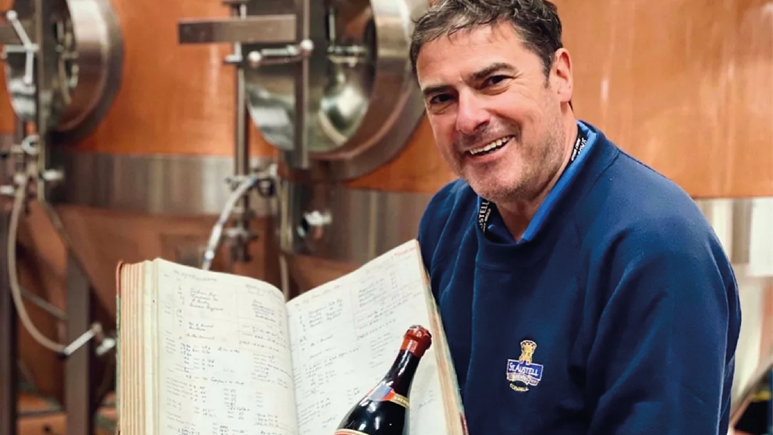Dig into the history of St Austell Brewery: Meet Paul
W e’re launching a new monthly history segment on our blog, and what better way to introduce it than by speaking to Paul in our archives. We’re delving into the ins and outs of his role to give you a taster of what you can look forward to in the coming months.

What’s your role at St Austell Brewery?
My title is Archivist, although archivist and historian may be more appropriate.
How long have you been working at St Austell Brewery?
Since February 2022.
Can you give us a glimpse into your day-to-day?
My initial task has been to understand what we have in the brewery archives, deciding how best to manage the collection, and ultimately, propose what we do with it going forward. I’ve found that the brewery’s history has been spread all over the building, so one of my first tasks has been to pull everything together. For example, historic brewing journals have been found in cupboards, in offices, in the safe, on display in the museum, in archive boxes, and in open storage – it’s a real treasure hunt. The same applies to other aspects of the collection like bottled beers, awards, photographs, architectural drawings, artwork, and more.
What do you most enjoy about working for the brewery?
I enjoy the heritage of the brand and by that, I mean stories of the people, the brand, the business, the buildings, and places. Our buildings, for example, have a fascinating story to tell. One such is The Yacht in Penzance, built by St Austell Brewery in 1936 in a remarkable Art Deco style that mirrored that of the Jubilee Pool opposite, echoing the aspirations of the seaside town. Designed by architect Colin Drewitt, the streamlined inn was quite a status symbol and a marker for the growth of the business between the wars. It was a brave investment for the directors of the day who had just spent £50,000 on the acquisition of Ellis & Son on Hayle which came with 30 licensed premises.
What's your favourite discovery you've made?
I think the 1885 brewing journal, containing Victorian recipes that were brewed in the old brewery in town, would be my favourite. The journal also mentions the first use of the steam coil, which again was another technological advance deployed by Walter Hicks.
What would you say has been the most significant event in the brewery's history?
Difficult to answer because since 1851, the business has been constantly growing. Of course, there are landmark events like the building of both breweries in the 1860s and 1890s, forming a limited company in 1910, and various business buyouts that brought new inns and hotels to the business. For me, the creation of the Small Batch Brewery has done a huge amount to widen the appeal of the brand, securing it for future generations.
What's the strangest artefact you've found in the archives?
Perhaps not so much strange, but I have been struck by some of the exciting designs of past promotional materials. Some of the beer labels and promotional posters are really quite rousing in terms of reflecting the age and mood of the time.
What are you most excited about for the future of the archives?
By getting the archives into order and catalogues fully, we will learn more about the people, places, and buildings that have made this a real stand-out brand in the West Country. What is slightly frustrating is that we do not have many Victorian records of Walter Hicks’ business enterprise, my guess is that much was destroyed in the 1910s after we became a limited company and after the death of the founder.
What's your most recent pub discovery?
Having spent 22 years living on the Lanhydrock estate, we have now moved to Probus where the Roseland has become our new playground. So, the Plume of Feathers at Portscatho (acquired in 1921) and the Rising Sun at St Mawes (1930) have become regular haunts.
And finally, what's your Friday drink of choice?
Definitely the latest small batch offering. I thought the Platinum Jubilee beer was excellent!